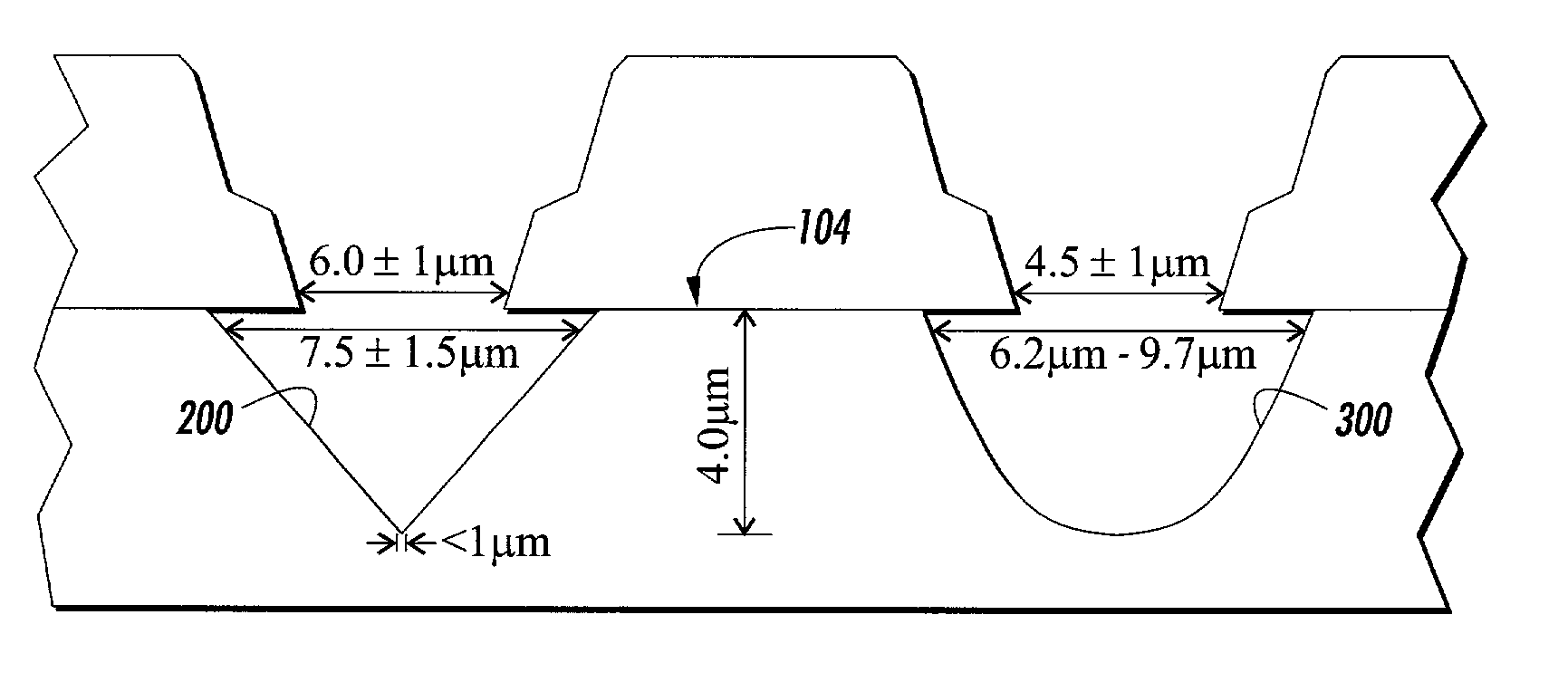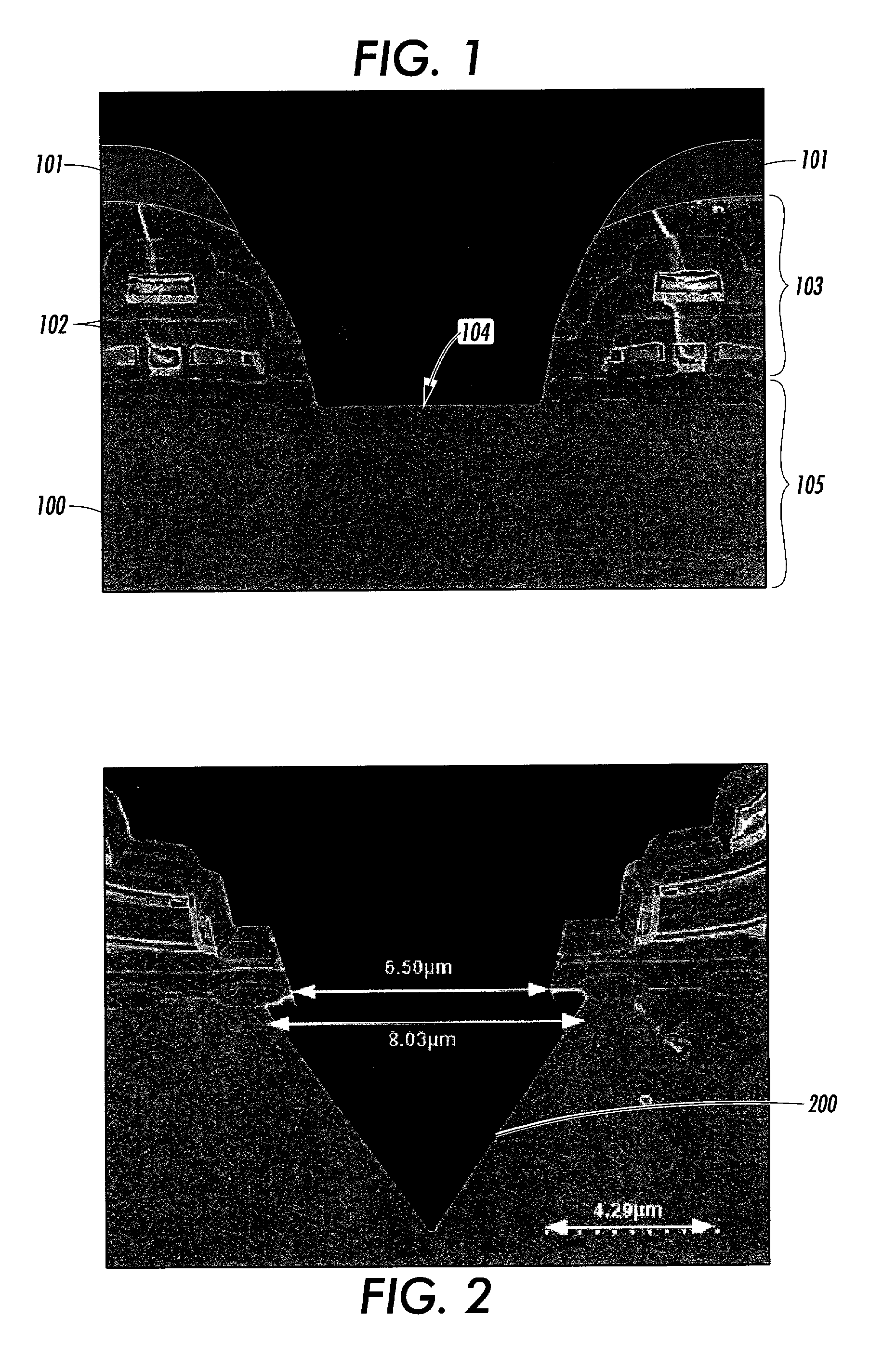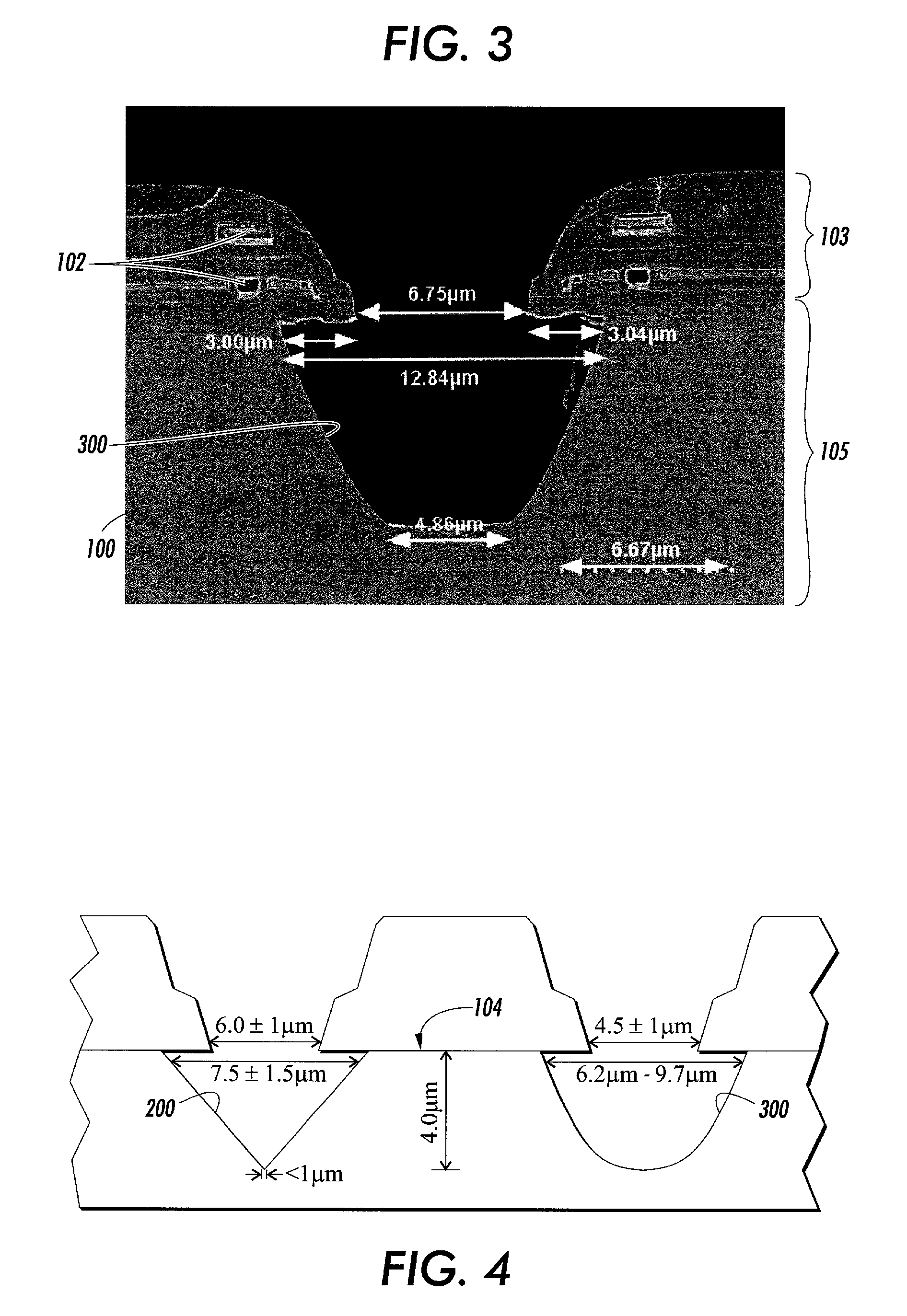Use of a U-groove as an alternative to using a V-groove for protecting silicon against dicing induced damage
a technology of dicing and u-groove, which is applied in the direction of cable/conductor manufacturing, electrical equipment, manufacturing tools, etc., can solve the problems of increasing the complexity and cost of the system, increasing the complexity of the system, and single or multiple die combinations such as described above usually require more complex and expensive optical systems, so as to achieve tight dicing accuracy and high resolution. , the effect of improving the dicing accuracy
- Summary
- Abstract
- Description
- Claims
- Application Information
AI Technical Summary
Benefits of technology
Problems solved by technology
Method used
Image
Examples
Embodiment Construction
[0016] The prior approach employed of using a V-groove for dicing image sensor dies as described above has associated with it increased costs, process cycle time, reduced yield and increased metal layer defects. The disclosure taught herein overcomes these disadvantages by replacing the V-groove with a U-groove, using in one embodiment a dry etch consisting of SF.sub.6, He and O.sub.2. The intent of etching a V-groove into the silicon is to relieve damage to the device caused by dicing the wafer. A U-groove has proven itself as an improvement because the angle of the U-groove is sufficient to deflect cracking and stress away from the device while only requiring a dry etch for its achievement.
[0017] FIG. 1 depicts a cross section of a wafer 100 comprising dies to be diced. The cross section depicted is a SEM magnification of one dicing channel on wafer 100. Here in FIG. 1 is depicted the result after photoresist 101 has been applied, exposed, and developed, and with a subsequent firs...
PUM
 Login to View More
Login to View More Abstract
Description
Claims
Application Information
 Login to View More
Login to View More - R&D
- Intellectual Property
- Life Sciences
- Materials
- Tech Scout
- Unparalleled Data Quality
- Higher Quality Content
- 60% Fewer Hallucinations
Browse by: Latest US Patents, China's latest patents, Technical Efficacy Thesaurus, Application Domain, Technology Topic, Popular Technical Reports.
© 2025 PatSnap. All rights reserved.Legal|Privacy policy|Modern Slavery Act Transparency Statement|Sitemap|About US| Contact US: help@patsnap.com



